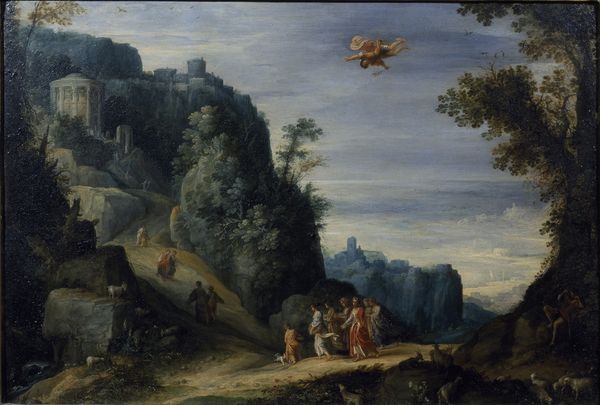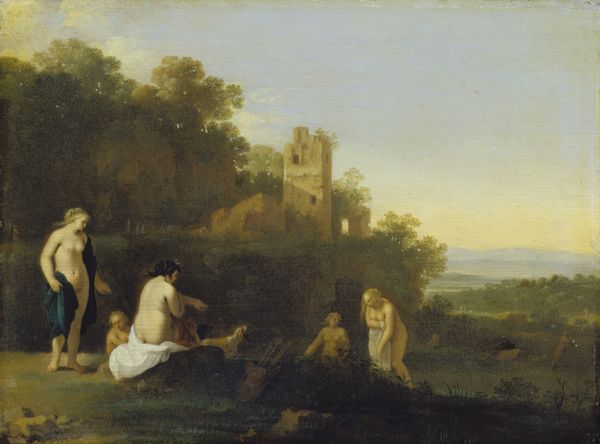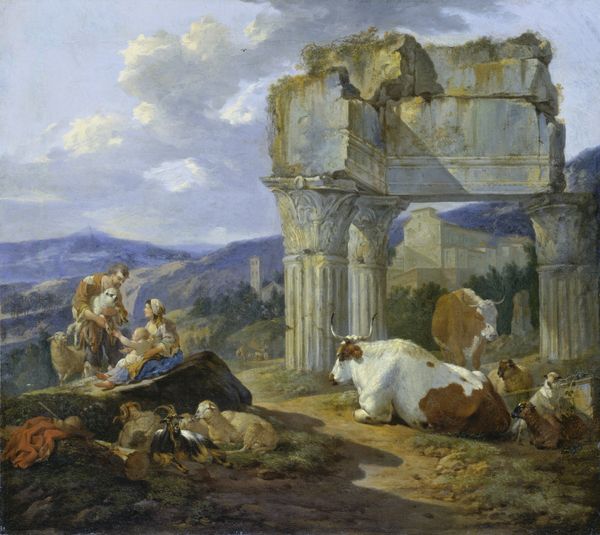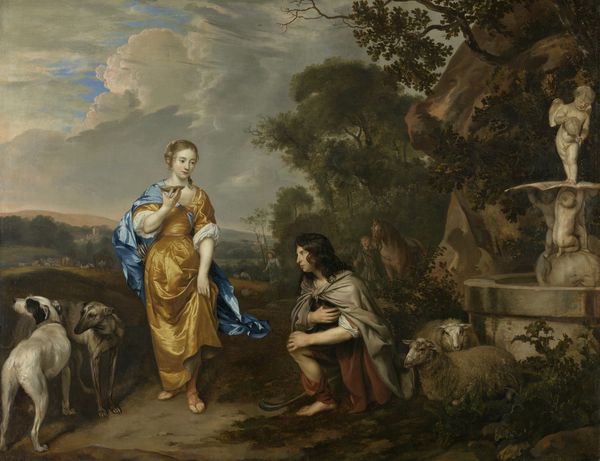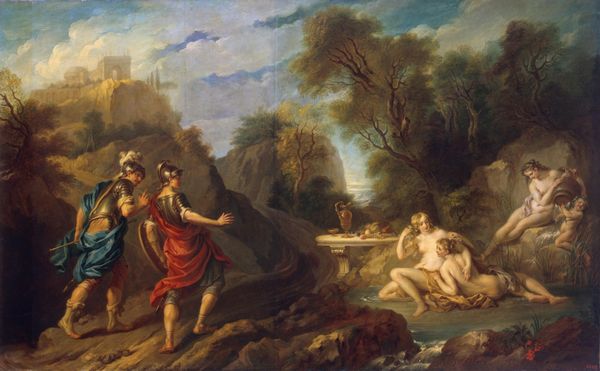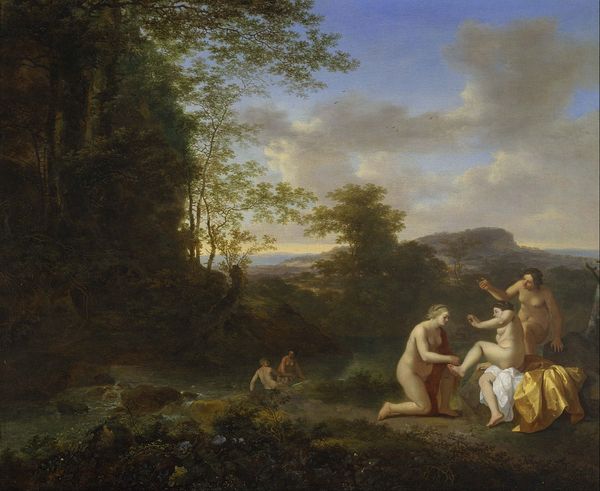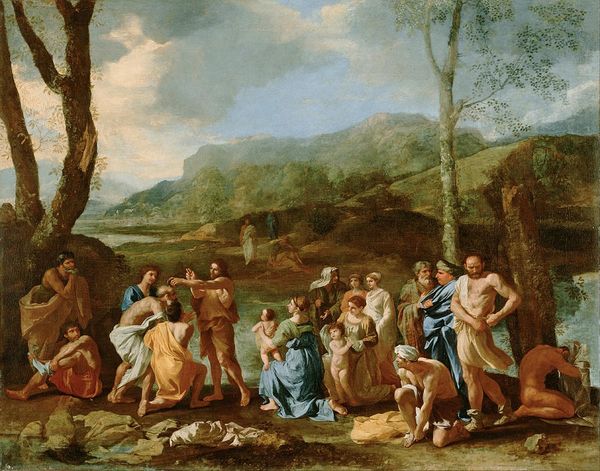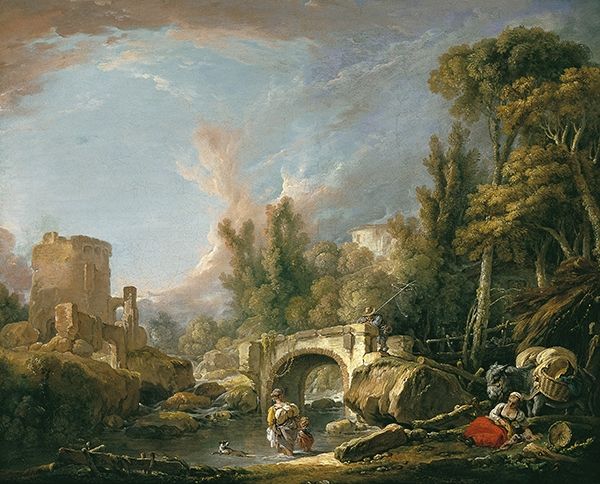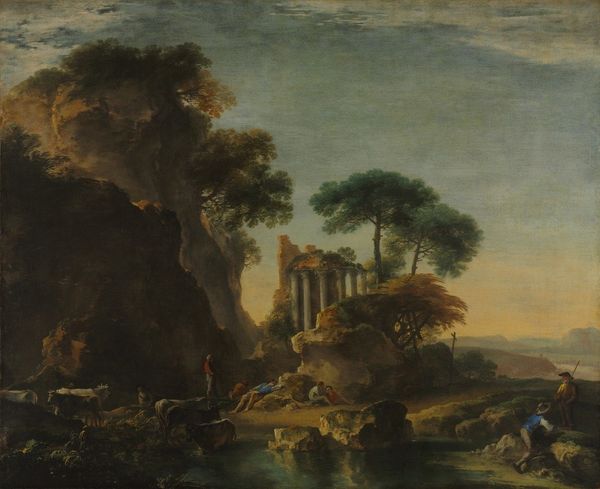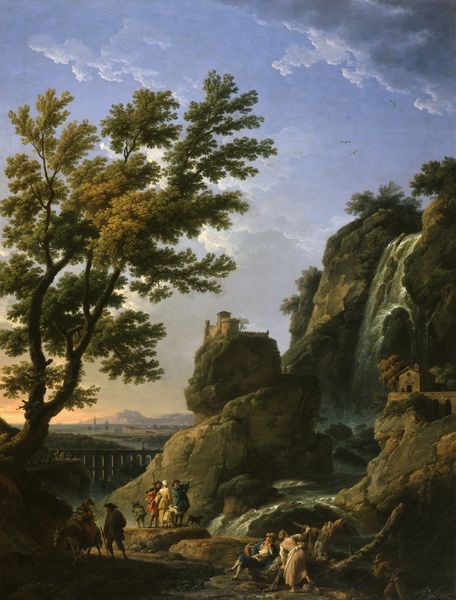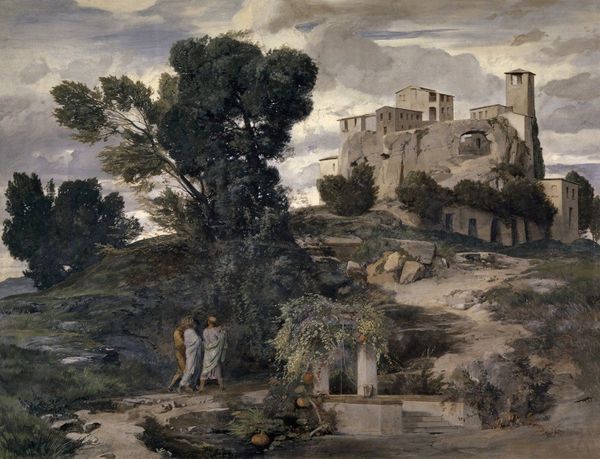
painting, oil-paint, wood
#
gouache
#
allegory
#
baroque
#
painting
#
oil-paint
#
landscape
#
figuration
#
wood
#
history-painting
Dimensions: 21.5 cm (height) x 27.5 cm (width) (Netto)
Curator: Here we have "Tobiah and the Angel," a painting believed to have been created between 1645 and 1680. It's oil paint on wood and presents a moment from the Book of Tobit. Editor: It strikes me as rather melancholic. The palette is muted, and even with the angel present, there's a sense of decay and loss hanging over the scene, amplified by the crumbling architecture. Curator: Indeed. Considering the production of oil paint at the time—pigments derived from minerals, plants, laborious processes of grinding and mixing—each colour represented a significant investment of labor and material. The choice to use these particular hues may reflect certain limitations in accessibility, shaping the emotional landscape of the piece. The artist probably mixed this gouache. Editor: Let’s consider the composition then. The diagonal recession leads the eye from Tobiah and the angel towards the ruins and distant landscape. The figures are small, almost incidental to the grandeur of the architecture, emphasizing temporality versus the long-standing ruins. What does it say about the subjects in the historical period? Curator: It suggests a dialogue between the timeless and transient. We can examine this through the lens of class structures, how these structures dictated who could depict what scenes, with landscapes acting as symbols of power, often commissioned and controlled by landed gentry. The inclusion of religious figures into this established hierarchy blurs established roles, mirroring shifts in political ideas regarding the religious power. Editor: An interesting interpretation. It highlights tensions between material reality and spiritual representation that run through the painting. The contrast of figures and stone architecture speaks to permanence. The figures offer temporality, whereas ruins indicate an ongoing existence with a sense of the eternal. Curator: And that eternal aspect, whether divinely or socially ordained, depended on those able to exploit material resources and labor for their purposes, immortalizing those efforts. This extends, I believe, into all types of allegory including the book of Tobit as referenced in this painting. Editor: Perhaps. Regardless, the use of perspective, light, and subject matter coalesce to achieve a balanced harmony between loss, hope and change. Curator: So it’s both an artifact and testament. I found that very insightful. Editor: Likewise! It is intriguing to reflect on how this work represents our understanding.
Comments
No comments
Be the first to comment and join the conversation on the ultimate creative platform.

